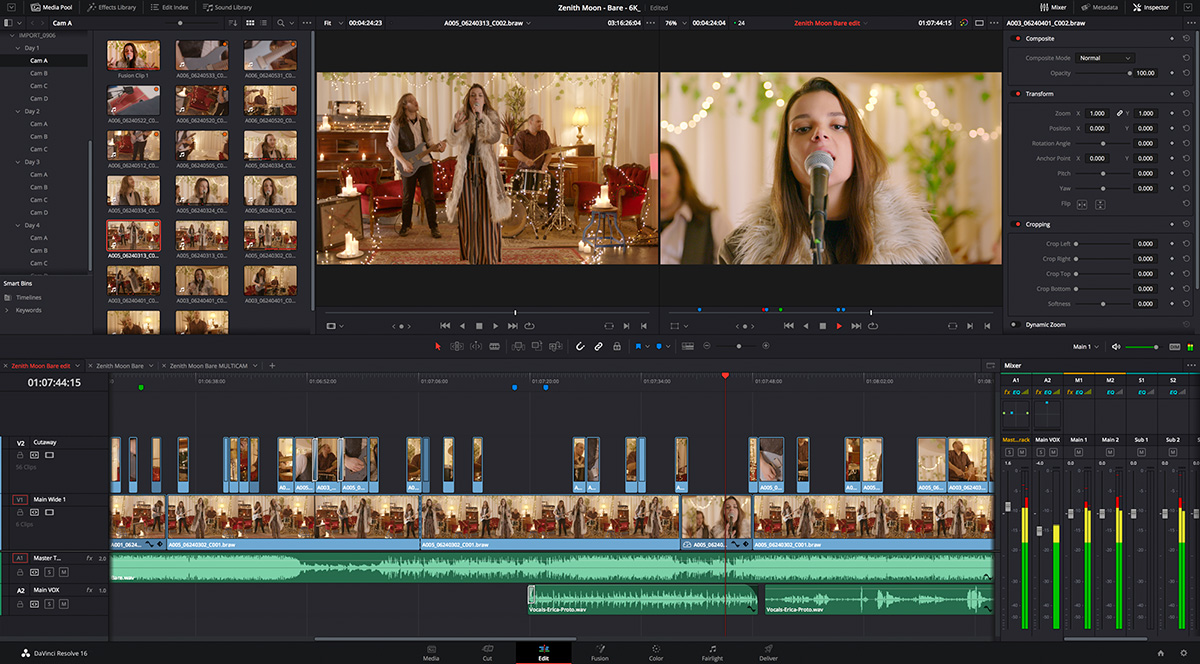
LUTs are versatile and easy to use, but using a table with a limited number of input and output values to convert a large color space to a small one is like pushing the signal through a grid. The Log footage then needs to be converted in one way or another to the display color space, either by Look Up Tables (LUTs) or by Color Management.
IMPORT LUT DAVINCI RESOLVE 12 FULL
The solution to that is Log encoding, essentially a method of conserving the full range of a camera’s color space for both contrasts and color. Recording in a small color space would limit their performance. The problem is that the color spaces of high-end cameras are larger than both Rec709 2.4 and P3-DCI. They all record in Rec709 2.4 color space, so they don’t need to be color managed.
IMPORT LUT DAVINCI RESOLVE 12 PROFESSIONAL
That’s the case for most cameras, including smartphones, DSLRs and even some professional models. When the camera color space and the display color space are the same, nothing needs to be converted. The standard color space for broadcast television is known as Rec709 2.4, and for cinema projection it’s P3-DCI.

Unlike cameras, where the unique capabilities of a sensor are a selling point, display color spaces are defined by international standards. The color space of a display (TV screen, monitor, cinema projector, etc.) is the range of colors and contrasts the display can reproduce. Camera sensors differ from one manufacturer to another and the technology improves all the time, so there are a bewildering number of camera color spaces around. Consumer cameras have a small color space, high-end cameras have a much larger one. A camera’s color space is the range of colors and contrasts its sensor can capture (see the footnote at the end of this article for a fuller explanation). There’s neither the time nor the space in this article to explain color spaces in any depth, but here’s a very brief summary of what we’re trying to deal with.Ĭolor Management is all about converting from one color space to another. But to get the most out of it, there’s a lot to explain! The basics of color space, LUTs and color management


On the contrary, it’s dead simple, as you’ll see if you skip to the “To sum up” section at the end. There’s nothing complicated about using Color Management. But for either method to work you need to get Color Management set up correctly, so that’s what this first article is about.ĭon’t be put off by the length of the article, by the way. In the second article, I’ll be proposing two methods to do this, each with slightly different results. These two articles are about getting Resolve’s Color Management to work as efficiently as LUTs.

When you’re grading several hundred clips a day, you want a decent image “out of the box” so you can get on with the creative work. You can manually correct this, of course, but it’s complicated and takes time, and time is a luxury for a colorist. Here’s an example of a Log encoded Arri Alexa clip: Log footage Arri LUT applied Color Managed In theory it should be a great alternative to using LUTs, but in practice it can produce surprising results with the blacks lifted and the whites going through the roof. Color management in Resolve can be frustrating.


 0 kommentar(er)
0 kommentar(er)
